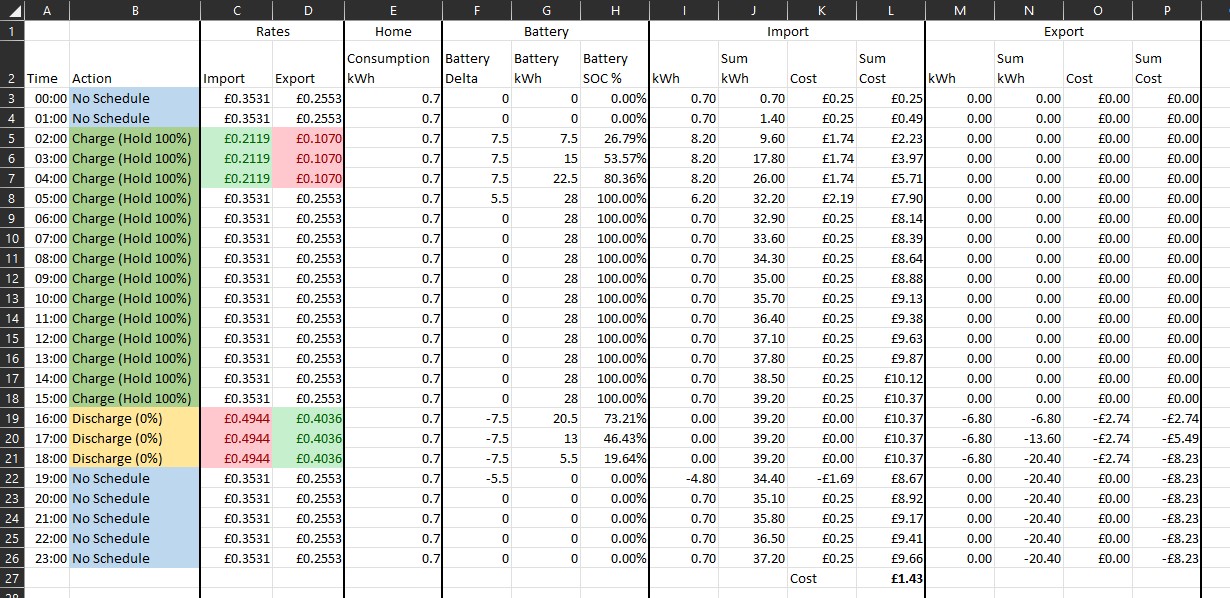I adjusted the prices, set the battery to 28kWh, and the charge / discharge rate to 7.5 and got the following. It makes no difference increasing battery size over 28kWh as I can't charge or discharge quick enough.
So if I'm reading that correctly that's an estimated cost of £1.43 a day, without taking into account excess solar that is exported/used. Changing the charge / discharge rate to 8kw means a cost of £1.14
I think there may be a slight bug in the spreadsheet, I come out of the three hour peak period having exported 3 * 7.5 = 22.5kWh, which leaves 5.5kWh, but it suddenly disappears, as there's no schedule it should decrease by 0.7 per hour until its gone, so should last through to the charging period.
Also got a negative value at I22 and K22, not sure if that is correct.




